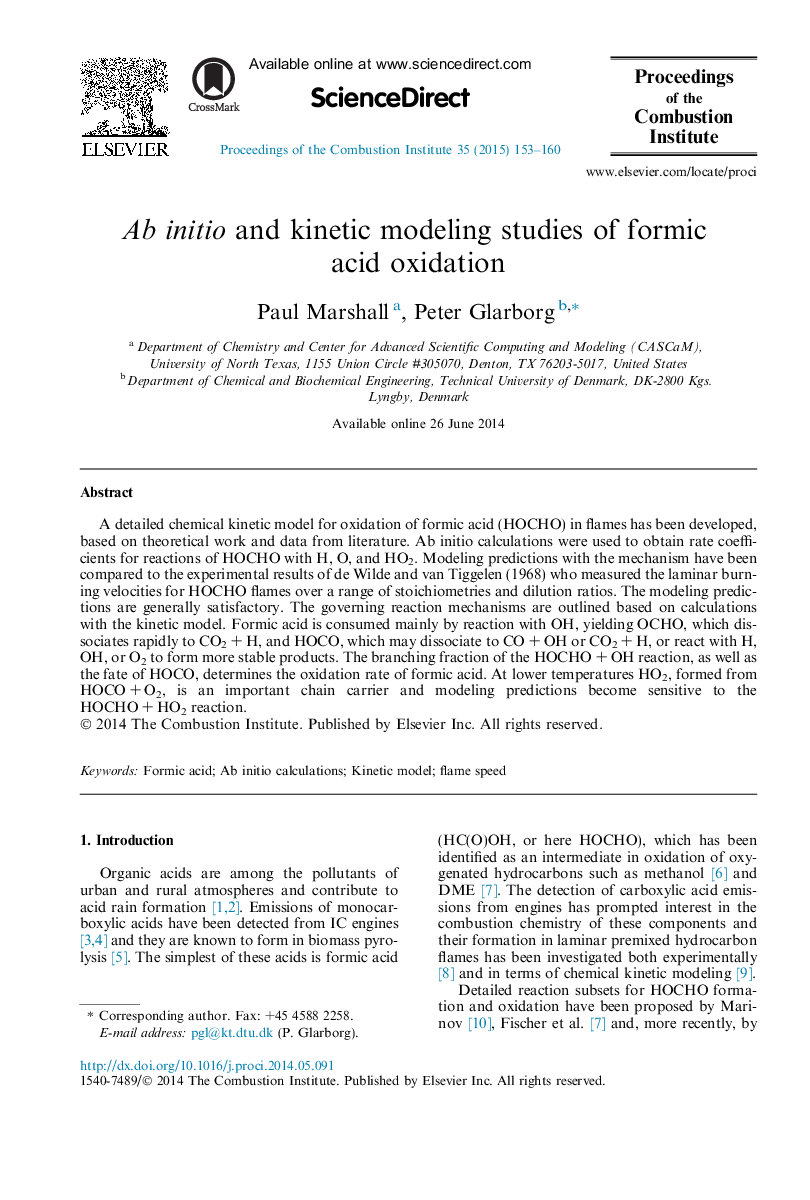| Article ID | Journal | Published Year | Pages | File Type |
|---|---|---|---|---|
| 6679220 | Proceedings of the Combustion Institute | 2015 | 8 Pages |
Abstract
A detailed chemical kinetic model for oxidation of formic acid (HOCHO) in flames has been developed, based on theoretical work and data from literature. Ab initio calculations were used to obtain rate coefficients for reactions of HOCHO with H, O, and HO2. Modeling predictions with the mechanism have been compared to the experimental results of de Wilde and van Tiggelen (1968) who measured the laminar burning velocities for HOCHO flames over a range of stoichiometries and dilution ratios. The modeling predictions are generally satisfactory. The governing reaction mechanisms are outlined based on calculations with the kinetic model. Formic acid is consumed mainly by reaction with OH, yielding OCHO, which dissociates rapidly to CO2Â +Â H, and HOCO, which may dissociate to COÂ +Â OH or CO2Â +Â H, or react with H, OH, or O2 to form more stable products. The branching fraction of the HOCHOÂ +Â OH reaction, as well as the fate of HOCO, determines the oxidation rate of formic acid. At lower temperatures HO2, formed from HOCOÂ +Â O2, is an important chain carrier and modeling predictions become sensitive to the HOCHOÂ +Â HO2 reaction.
Related Topics
Physical Sciences and Engineering
Chemical Engineering
Chemical Engineering (General)
Authors
Paul Marshall, Peter Glarborg,
